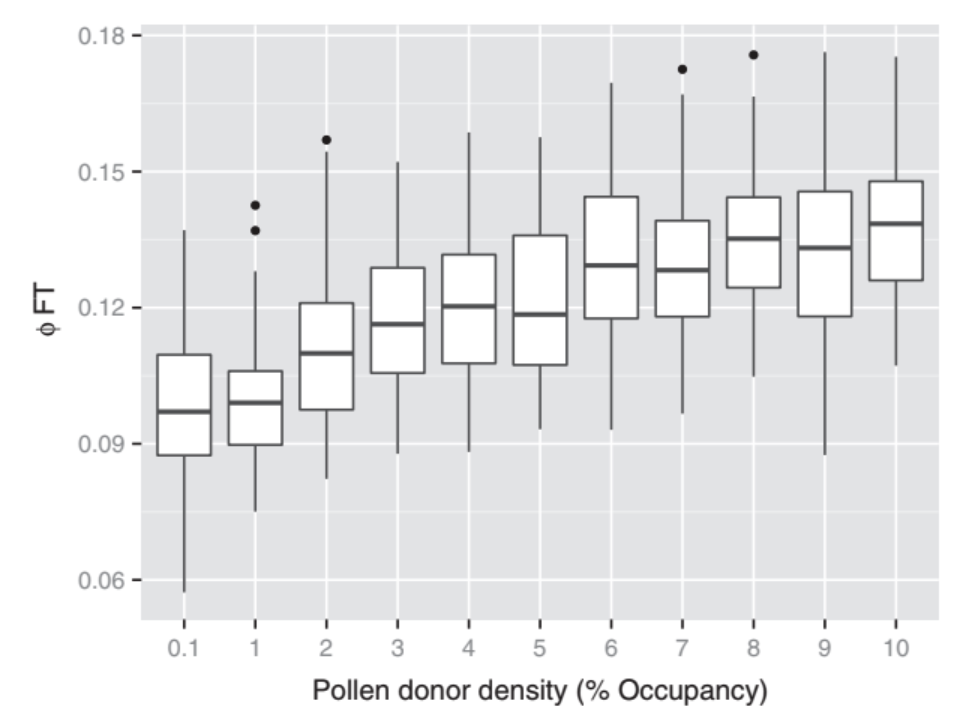
The gravity of pollination: integrating at-site features into spatial analysis of contemporary pollen movement
MOLECULAR ECOLOGY. 2014.
Abstract
Pollen-mediated gene flow is a major driver of spatial genetic structure in plant populations. Both individual plant characteristics and site-specific features of the landscape can modify the perceived attractiveness of plants to their pollinators and thus play an important role in shaping spatial genetic variation. Most studies of landscape-level genetic connectivity in plants have focused on the effects of interindividual distance using spatial and increasingly ecological separation, yet have not incorporated individual plant characteristics or other at-site ecological variables. Using spatially explicit simulations, we first tested the extent to which the inclusion of at-site variables influencing local pollination success improved the statistical characterization of genetic connectivity based upon examination of pollen pool genetic structure. The addition of at-site characteristics provided better models than those that only considered interindividual spatial distance (e.g. IBD). Models parameterized using conditional genetic covariance (e.g. population graphs) also outperformed those assuming panmixia. In a natural population of Cornus florida L. (Cornaceae), we showed that the addition of at-site characteristics (clumping of primary canopy opening above each maternal tree and maternal tree floral output) provided significantly better models describing gene flow than models including only between-site spatial (IBD) and ecological (isolation by resistance) variables. Overall, our results show that including interindividual and local ecological variation greatly aids in characterizing landscape-level measures of contemporary gene flow.